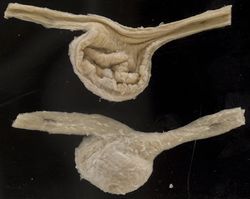Crop - Anatomy and Physiology
Also known as: Ingluvies
Introduction
The crop is a food storage device present in avian species. It is usually used when the muscular stomach (gizzard) is full. The crop also softens food.
It is a useful tool for avian veterinarians and owners for assessing if a bird has recently eaten and it is especially important to ensure young chicks always have full crops. It is also a common site for impactions, rupture and surgical entry to remove foreign bodies.
Structure and Function
The crop is a muscular chamber. It is a fusiform enlargement of the ventral wall of the oesophagus at the thoracic inlet. It bulges and lies against the breast muscles.
Innervation
The crop is innervated by the vagus nerve (CN X).
Species Differences
The crop is absent or vestigial in waterfowl (ducks, swans and geese) and owls and tends to be much larger and muscular in seed eating birds and carnivorous birds of prey. Pigeons have epithelial cells in their crop sensitive to prolactin which slough when chicks (squabs) hatch, producing crop milk.
Links
Click here for more information on the Oesophagus - Anatomy & Physiology
| Crop - Anatomy and Physiology Learning Resources | |
|---|---|
 Test your knowledge using flashcard type questions |
Avian Alimentary Tract |
Webinars
Failed to load RSS feed from https://www.thewebinarvet.com/gastroenterology-and-nutrition/webinars/feed: Error parsing XML for RSS
